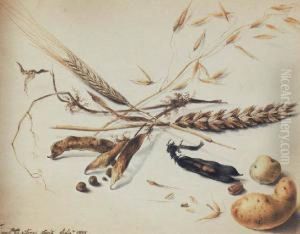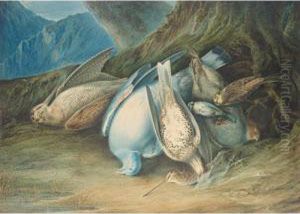Patrick Syme Paintings
Patrick Syme was a Scottish artist known primarily for his work as a botanical illustrator and flower painter. Born in Edinburgh in 1774, Syme made significant contributions to the field of botanical art and was closely associated with the scientific community of his time.
Syme trained under the tutelage of the highly respected Scottish landscape and flower painter Alexander Nasmyth, whose influence was pivotal in Syme's development as an artist. Syme's work is characterized by its meticulous detail and accuracy, which was of utmost importance in the field of botanical illustration, where the scientific and educational value of the artwork is paramount.
In addition to his painting, Syme is perhaps best remembered for his role in enhancing the 'Wernerian system' of color classification. He expanded upon the work of the German geologist Abraham Gottlob Werner, who had developed a nomenclature of colors for the identification of minerals. Syme applied this system more broadly in his book 'Werner's Nomenclature of Colours,' which was first published in 1814. This guide was widely used by artists and scientists alike and was an important reference work for Charles Darwin during his voyage on the HMS Beagle.
Syme's dedication to his craft and his collaboration with scientists of his era, including the leading botanist Robert Brown, allowed him to make significant contributions to botanical literature. His illustrations were featured in a number of important botanical publications, helping to disseminate knowledge about plant species.
Despite his contributions to art and science, Patrick Syme is not as widely remembered as some of his contemporaries. However, his work continues to be of interest to historians of science and art, particularly those focused on the intersection of these fields during the Enlightenment and early 19th century.
Patrick Syme passed away in 1845, leaving behind a legacy of work that exemplifies the fusion of artistic skill and scientific inquiry that characterized much of the natural history work of his time.

